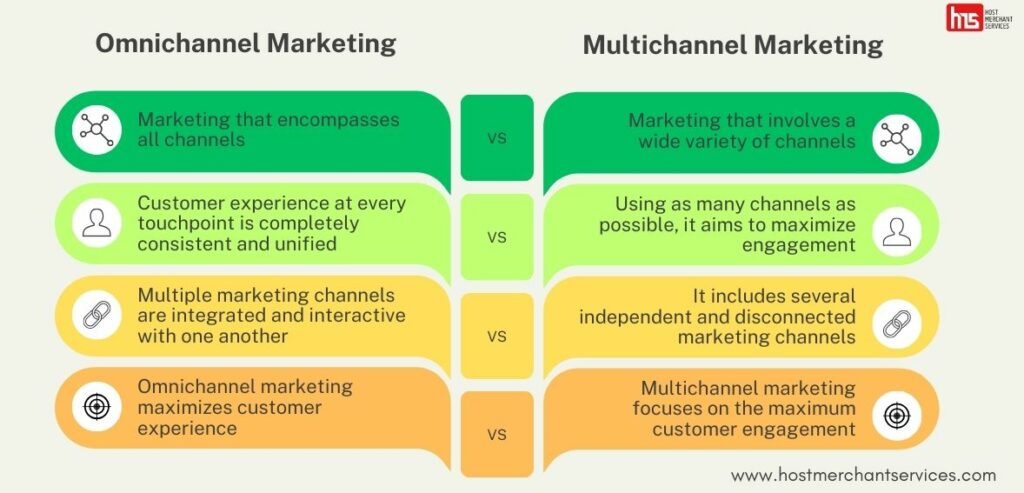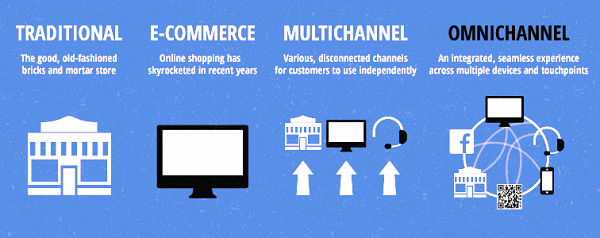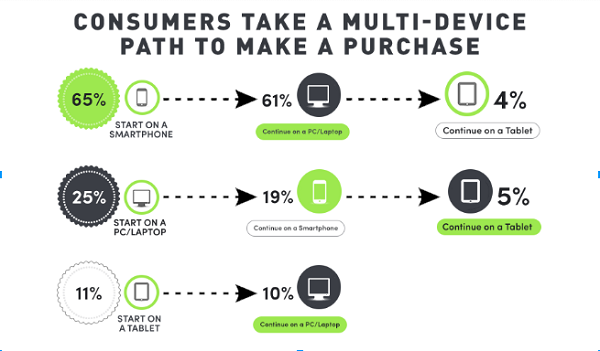Unlock the secrets to thriving in multichannel ecommerce with these proven strategies that drive sales and maximize your reach.

Image courtesy of via DALL-E 3
Table of Contents
- Introduction to Multichannel Ecommerce
- Benefits of Multichannel Ecommerce
- Choosing the Right Channels
- Setting Up Your Multichannel Strategy
- Managing Inventory Across Channels
- Providing Excellent Customer Service
- Marketing Your Multichannel Store
- Analyzing and Improving Results
- Conclusion
- Frequently Asked Questions (FAQs)
Introduction to Multichannel Ecommerce
Welcome to the world of multichannel ecommerce! Today, we’re going to explore what this term means and why it’s crucial for businesses looking to succeed in online shopping.
What is Multichannel Ecommerce?
When we talk about multichannel ecommerce, we’re referring to the idea of selling products not just on one online platform, but across various channels. These channels can include your own website, social media platforms like Facebook and Instagram, as well as online marketplaces like Amazon and eBay. By expanding where you sell your products, you can reach a much larger audience of potential customers.
Why is It Important?
Selling on multiple channels comes with a host of benefits for businesses. One of the most significant advantages is the ability to reach more customers than if you were only selling in one place. By spreading your products across different platforms, you increase your chances of getting noticed by a diverse group of shoppers. This, in turn, can lead to higher sales and greater success for your business.
Benefits of Multichannel Ecommerce
In the world of online shopping, businesses have found success using a strategy called multichannel ecommerce. This approach involves selling products on various platforms like websites, social media, and online marketplaces. Let’s explore the advantages of using multichannel ecommerce for businesses.
Expand Your Reach
By selling your products on different channels, you open up the opportunity to connect with more customers. Some shoppers may prefer to browse on social media, while others might search for products on specific marketplaces. By having a presence on multiple platforms, you can reach a wider audience that may not have found your products otherwise.
Increase Sales Opportunities
More channels mean more chances to sell your products. When you make your items available on various platforms, you increase the likelihood of reaching customers who are ready to make a purchase. This can lead to more sales for your business and help you grow your online presence.
Customer Convenience
Offering your products on multiple channels also benefits your customers. It provides them with the convenience of choosing where and how they want to shop. Some may prefer the ease of buying through a social media platform, while others may trust online marketplaces more. By giving customers the flexibility to shop where they feel most comfortable, you enhance their overall shopping experience.
Choosing the Right Channels
Before diving into selling on multiple platforms, it’s crucial to understand who your target audience is. Knowing your customers’ preferences, demographics, and online behaviors can help you choose the right channels to reach them effectively. For instance, if your products cater to a younger demographic, focusing on social media platforms like Instagram or TikTok might be more advantageous.

Image courtesy of www.hostmerchantservices.com via Google Images
Popular Platforms
There is a wide array of online platforms to choose from when considering multichannel ecommerce. Some of the most popular options include giants like Amazon and eBay, as well as social media sites such as Facebook, Instagram, and Pinterest. Each platform has its unique features and audience, so it’s essential to pick the ones that align with your business goals and target market.
Pros and Cons of Each Channel
When selecting the channels to sell your products, it’s essential to weigh the pros and cons of each platform. For example, while Amazon might offer a vast customer base and streamlined shipping options, it also comes with stiff competition and high fees. On the other hand, social media platforms can provide a more personalized shopping experience but might require more effort in building a loyal following. By carefully evaluating the advantages and drawbacks of each channel, you can make informed decisions that support your business objectives.
Setting Up Your Multichannel Strategy
In order to successfully sell your products across multiple channels, you need to have a solid strategy in place. Here are some steps to help you set up your multichannel ecommerce plan:
Create a Plan
First and foremost, it’s essential to outline your goals and plan your approach. Determine what you want to achieve by selling on various platforms, whether it’s reaching a wider audience, increasing sales, or building brand awareness.
Pick Your Tools
There are various ecommerce tools available that can help you manage multiple channels efficiently. Consider using platforms like Shopify, WooCommerce, or BigCommerce to streamline your operations and maximize your reach.
Test and Adjust
It’s important to be flexible and willing to try different approaches as you start selling across multiple channels. Monitor your performance, analyze the results, and make adjustments as needed to optimize your strategy for success.
Managing Inventory Across Channels
A centralized inventory system is like having a magic wand that lets you keep track of all your products in one place. Imagine having a big book that shows you how many toys, clothes, or gadgets you have in your store without running around to check each shelf. This system helps you know exactly what you have in stock so you can sell it without any surprises.

Image courtesy of www.linkedin.com via Google Images
Keep Stock Updated
Just like making sure you have all your toys after a playdate, keeping your inventory updated is super important. If you sell the last item of your favorite toy but forget to update your list, someone else might think they can still buy it. This can make your customers sad, and you don’t want sad customers! So, always make sure your inventory list matches what’s actually in your store.
Using Inventory Software
Imagine having a special robot friend that helps you organize your toys in neat little piles. Inventory software is like that helpful robot, keeping track of your products, prices, and sales for you. This software can make managing your stock levels and orders much easier, so you can focus on playing and selling without any worries.
Providing Excellent Customer Service
Customer service is a crucial aspect of running a successful multichannel ecommerce business. Ensuring that your customers have a positive experience can lead to repeat purchases and valuable word-of-mouth advertising. Here are some key strategies to provide excellent customer service:
Respond Quickly
When customers reach out with questions or issues, it is important to respond promptly. Quick responses show that you value their time and are dedicated to solving their problems. Whether it’s through email, social media, or phone, make sure to address their concerns in a timely manner.
Consistent Experience
Offering a consistent level of service across all your channels is essential for building trust with your customers. Whether they are shopping on your website, through social media, or on a marketplace, ensure that they receive the same high-quality service every time. Consistency breeds loyalty.
Handling Returns and Complaints
No matter how well you run your business, there will inevitably be times when customers need to return an item or have a complaint. Make this process as seamless as possible by providing clear instructions for returns and resolving complaints quickly and professionally. Turning a negative experience into a positive one can create a loyal customer for life.
Marketing Your Multichannel Store
When you have set up your multichannel store and are ready to start selling, it’s essential to market your products effectively across all channels. By promoting your products strategically, you can attract more customers and drive sales. Here are some key strategies for marketing your multichannel store.

Image courtesy of www.instrumental.net via Google Images
Social Media Campaigns
Social media platforms like Facebook and Instagram offer a great opportunity to reach a wide audience with targeted advertising. By creating engaging ads that showcase your products and promotions, you can attract customers who may not have found your store otherwise. Make sure to use captivating visuals and compelling copy to entice users to click on your ads and explore your products further.
Email Marketing
Another effective way to promote your multichannel store is through email marketing. Sending newsletters and special offers to your email subscribers can help bring customers back to your store and entice them to make a purchase. Personalize your emails based on customer preferences and purchase history to make them more relevant and engaging. Don’t forget to include clear calls-to-action that direct recipients to your online store.
Promotions and Discounts
Everyone loves a good deal, so offering promotions and discounts can be a powerful way to attract shoppers to your multichannel store. Whether it’s a limited-time sale, a buy-one-get-one-free offer, or a discount for loyal customers, promotions can create a sense of urgency and encourage customers to make a purchase. Make sure to promote your deals across all channels to maximize their impact and reach a broader audience.
Analyzing and Improving Results
When you are running a multichannel ecommerce business, it’s essential to keep an eye on your sales data. This means looking at the numbers to see which channels are bringing in the most sales. By analyzing this data, you can figure out what is working well and where you might need to make some changes. For example, if you notice that your sales are booming on a particular platform, you might want to focus more of your efforts there.
Customer Feedback
Listening to what your customers have to say is another crucial aspect of improving your multichannel ecommerce strategy. Customer feedback can provide valuable insights into areas where you can make enhancements. Whether it’s through reviews, comments, or direct messages, paying attention to what your customers are saying can help you tailor your offerings to better meet their needs and preferences.
Adjusting Strategies
After analyzing your sales data and gathering customer feedback, it’s time to make some adjustments to your strategies. This could involve tweaking your marketing campaigns, updating your product offerings, or enhancing your customer service processes. By staying flexible and open to change, you can continuously refine your multichannel approach to achieve even better results.
Conclusion
In this blog post, we explored the world of multichannel ecommerce and the strategies for success that businesses can implement to thrive in the online marketplace. By leveraging multiple online platforms such as websites, social media, and online marketplaces, businesses can significantly expand their reach, increase sales opportunities, and enhance customer convenience.

Image courtesy of www.instrumental.net via Google Images
Key Takeaways
Throughout this article, we discussed the importance of multichannel ecommerce and how it can benefit businesses in various ways. By knowing your audience, choosing the right platforms, creating a solid strategy, managing inventory effectively, providing excellent customer service, and implementing effective marketing tactics, businesses can set themselves up for success in the multichannel ecommerce landscape.
Remember, success in multichannel ecommerce requires a well-thought-out plan, continuous testing and adjustments, and a commitment to delivering top-notch customer service across all channels.
By analyzing sales data, listening to customer feedback, and making the necessary improvements, businesses can stay ahead of the competition and continue to grow their online presence.
Overall, multichannel ecommerce offers businesses a wealth of opportunities to reach more customers, increase sales, and build a strong brand presence online. By following the strategies outlined in this blog post, businesses can position themselves for success in the dynamic world of online retail.
Frequently Asked Questions (FAQs)
What is the best platform to start with?
For new multichannel sellers, it’s recommended to start with popular platforms like Amazon, eBay, or social media sites. These platforms have a large customer base and are relatively easy to set up and manage. It’s a good idea to research which platform aligns best with your target audience and products to maximize your success.
How much time does it take to manage multiple channels?
The time commitment to manage multiple channels can vary based on the size of your business and the number of platforms you are using. Initially, setting up and optimizing your channels may take more time, but once you have established a routine, it becomes more manageable. To increase efficiency, consider using ecommerce tools to streamline processes, like inventory management systems and automated marketing software.







